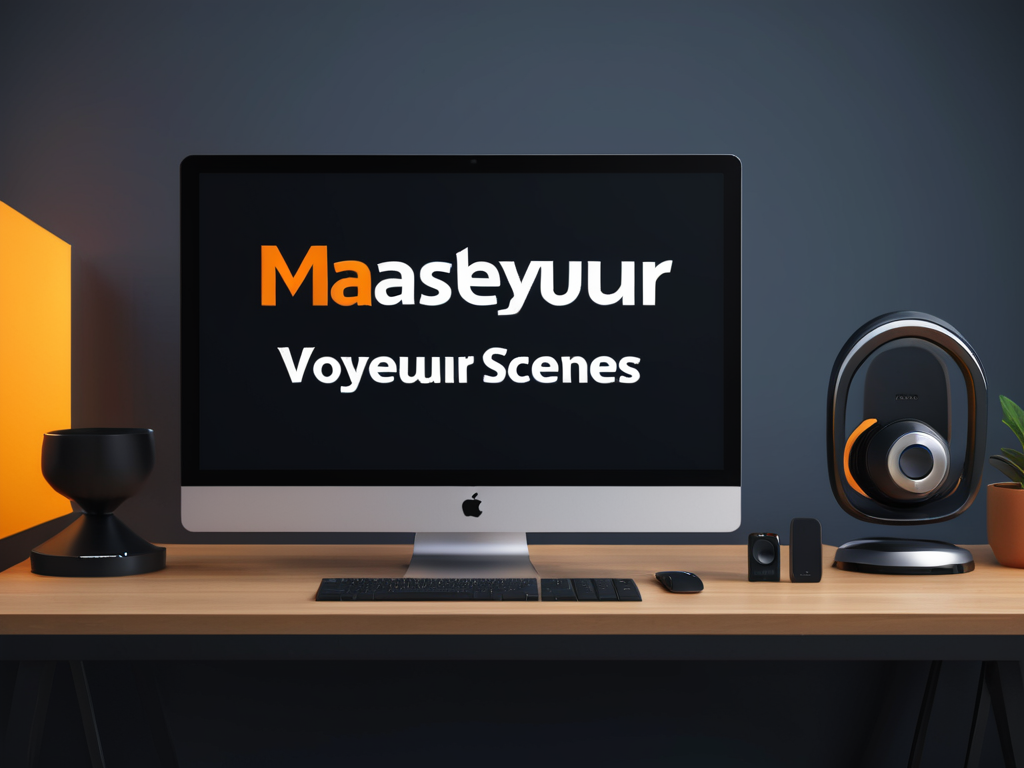Mastering Voyeur-Style Scenes in 3D Rendering with Blender

Creating Realistic Voyeur-Style Scenes in 3D Rendering Using Blender
===========================================================
Introduction
The art of voyeurism has long fascinated audiences in various forms of media. From cinema to literature, the concept of observing others without being observed has been a staple of storytelling. With the advent of 3D rendering and animation tools like Blender, creators can now immerse viewers into these scenarios with unprecedented realism. In this blog post, we will explore how to create realistic voyeur-style scenes in 3D rendering using Blender.
Understanding Voyeurism
Before diving into the technical aspects of creating voyeuristic scenes, it’s essential to grasp the concept itself. Voyeurism involves observing others without their knowledge or consent. This can be applied to various settings, such as private conversations, intimate moments, or even public events. In the context of 3D rendering, we’ll focus on creating immersive environments that simulate these scenarios.
Setting Up the Scene
To begin, let’s set up a basic scene in Blender:
- Create a new project by selecting File > New.
- Set the units to meters and render resolution to 1920 x 1080 pixels.
- Delete the default cube and create a new plane (Ctrl+A) to serve as our floor.
Lighting
Proper lighting is crucial for creating an immersive atmosphere. For voyeuristic scenes, we’ll focus on soft, natural light:
- Add a Sun lamp (Shift+A > Lamp > Sun) and adjust its properties:
- Intensity: 0.5
- Color: White
- Create a Hemi lamp (Shift+A > Lamp > Hemispheric) for indirect lighting:
- Intensity: 1.0
- Color: Soft white
Camera Settings
To achieve the desired voyeuristic perspective, we’ll use a combination of camera settings and lens effects:
- Create a new camera (Shift+A > Camera) and position it above the scene.
- Set the camera’s Focal Length to 35mm for a wide-angle view.
- Apply a Lens Distortion effect (Ctrl+Shift+A > Lens Distortion) with:
- K1: -0.02
- K2: 0.00
Compositing
To create the illusion of observing from afar, we’ll use compositing techniques:
- Create a new node group (Ctrl+Shift+A > Node Group) and add:
- A Color node to adjust brightness and contrast.
- A Blur node to soften the image.
- Apply the node group to the scene’s render layer.
Example: Private Conversation
Let’s put our skills into practice by creating a private conversation scenario:
- Create two characters (Ctrl+Shift+A > Mesh > Monkey) and position them in a room.
- Set up a camera to observe from behind a one-way mirror (using the Camera settings above).
- Add lighting and render the scene.
Advanced Techniques
To further enhance our voyeuristic scenes, we can employ advanced techniques:
- Motion Blur: Apply motion blur to simulate the feeling of observing movement.
- Depth of Field: Use a shallow depth of field to emphasize the subject’s face or body.
- Noise Reduction: Reduce noise in the render using tools like OpenImageIO.
Conclusion
Creating realistic voyeur-style scenes in 3D rendering with Blender requires attention to lighting, camera settings, and compositing techniques. By applying these principles and experimenting with advanced methods, creators can craft immersive experiences that transport viewers into hidden worlds. Whether you’re a seasoned artist or just starting out, this guide has provided the necessary tools to embark on your own voyeuristic journey.
Additional Resources
For further exploration of Blender’s capabilities, check out the following resources:
- Blender Documentation: Comprehensive guides and tutorials.
- Blender Guru: Tutorials and videos covering various aspects of Blender.
- CG Geek: Articles and tutorials on 3D rendering and animation.
About Elizabeth Hernandez
I'm Elizabeth Hernandez, a seasoned editor with a passion for the intersection of voyeur photography and erotic fiction. With a background in fine art and literature, I help curate stories that spark desire and conversation on voyeurpicture.com. Let's explore the boundaries together.
